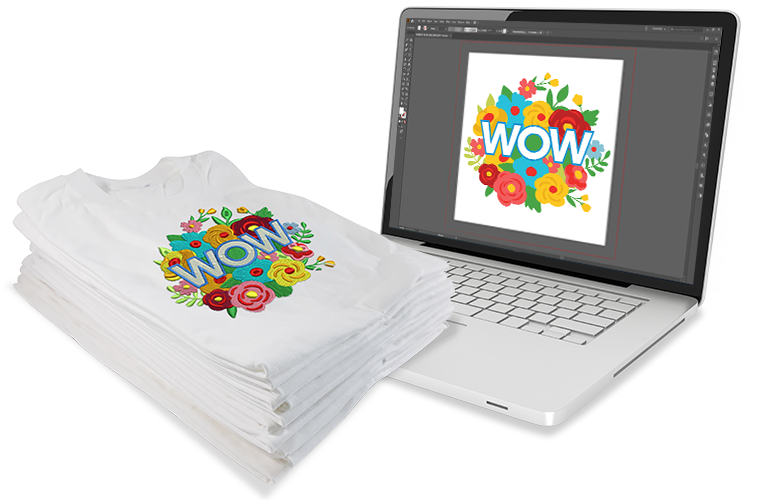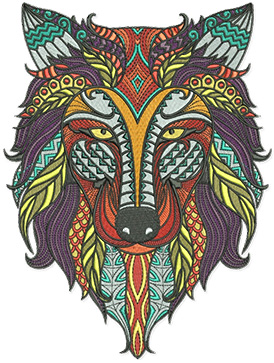Expert Digitizing for Embroidery: Rapid and Reliable Service
Expert Digitizing for Embroidery: Rapid and Reliable Service
Blog Article
Grasping the Needlework Digitizing Refine: Your Ultimate Guide
Needlework digitizing is a thorough craft that requires accuracy and experience to translate detailed layouts right into electronic styles for device needlework. As craftsmens begin on this trip to grasp the embroidery digitizing process, a detailed understanding of the essentials sets the structure for quality.

Recognizing Needlework Digitizing Essentials
Embroidery digitizing fundamentals create the structure whereupon detailed designs are converted into machine-readable styles for exact sewing. This initial step in the needlework digitizing process is crucial for making sure that the last embroidered product is a devoted representation of the original design. Understanding embroidery digitizing essentials includes comprehending vital ideas such as stitch types, stitch instructions, thickness, underlay, and draw compensation.
Sew types play a crucial function in establishing the aesthetic and textural end result of the embroidered layout. By selecting the ideal stitch kind, whether it be satin, fill, or running stitch, digitizers can accomplish the wanted result and boost the general quality of the embroidery. Additionally, sew instructions influences the flow and dimension of the style, while density establishes the spacing and insurance coverage of the stitches.
Furthermore, rug stitching offers stability to the design by safeguarding the fabric and preventing distortion throughout the embroidery procedure. Draw settlement is an additional crucial factor to consider to neutralize the natural tendency of material to contract when stitched. Mastering these needlework digitizing basics is basic for developing professional-quality stitched products.
Selecting the Right Digitizing Software
Choosing the suitable digitizing software program is a critical decision that dramatically impacts the performance and top quality of the needlework digitizing procedure. Digitizing for Embroidery. When selecting the best digitizing software program, it is important to consider elements such as the complexity of styles you intend to create, the user-friendliness of the software, the level of consumer assistance offered, and the compatibility with your embroidery maker
There are various digitizing software options available out there, varying from standard programs for novices to innovative software application for expert digitizers. Some popular selections consist of Wilcom EmbroideryStudio, Hatch Needlework Software Program, and PulseID. These software supply a broad array of devices and attributes to aid you create intricate layouts easily.
Before deciding, it is recommended to check out the different useful source software alternatives with totally free trials or trials to identify which one ideal fits your demands. In addition, reading evaluations and looking for referrals from skilled digitizers can offer useful understandings right into the strengths and weaknesses of each software application plan (Digitizing for Embroidery). By meticulously evaluating your requirements and contrasting the features of various digitizing software application, you can make an enlightened option that enhances your embroidery digitizing process
Digitizing Tools and Strategies

Optimizing Layout Setup for Needlework
Understanding the complexities of layout setups is fundamental in accomplishing ideal results in the needlework digitizing procedure, building upon the structure laid by understanding digitizing tools and methods. When maximizing design setups for embroidery, it is important to take into consideration aspects such as stitch kind, density, rug, pull settlement, and registration. Stitch kind selection affects the overall feel and look of the design, with alternatives like satin, fill, and running stitches providing various appearances and results. Thickness describes the spacing and density of stitches, impacting the design's insurance coverage and durability. click to find out more Correct rug sewing provides security and stops material distortion, specifically for complex styles or on stretchy materials. Pull settlement readjusts for fabric stretch during stitching, making sure exact style replication. Enrollment settings line up different components of the layout properly, keeping total design integrity. By fine-tuning these design settings, embroiderers can boost the quality and accuracy of their embroidered creations.

Troubleshooting Common Digitizing Issues
When coming across usual digitizing problems during the embroidery procedure, it is vital to understand the origin triggers and apply effective solutions promptly. One typical problem is stitch density problems, where stitches might be as well dense, triggering the fabric to tighten, or as well sporadic, bring about voids in the layout. Readjusting the stitch density setups in the digitizing software application can assist settle this concern.
An additional regular difficulty is thread breaks throughout the needlework procedure. This can occur as a result of numerous reasons such as incorrect stress settings, boring needles, or using low-grade string. Making certain correct maintenance of the needlework device, including routine needle modifications and tension changes, can minimize the incident of string breaks.
Moreover, design enrollment mistakes can cause misaligned components within you can check here the embroidery layout. Inspecting the style placement in the digitizing software program and making essential changes prior to stitching can help in preventing this concern. By dealing with these common digitizing concerns promptly and properly, you can guarantee a smoother embroidery process and high-quality ended up products.
Final Thought
To conclude, understanding the embroidery digitizing process requires a strong understanding of the fundamentals, the right selection of software program, and understanding of devices and methods. Maximizing design setups and troubleshooting common digitizing concerns are critical actions in ensuring high-grade embroidery results. By complying with these actions diligently, one can attain precision and performance in the digitizing process.
Report this page